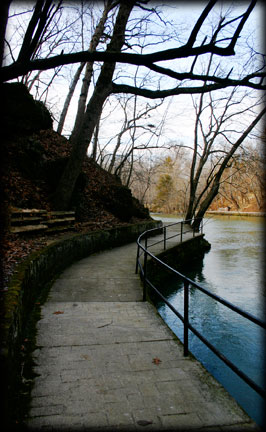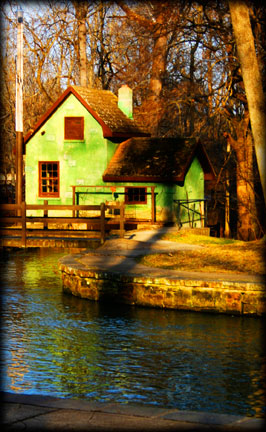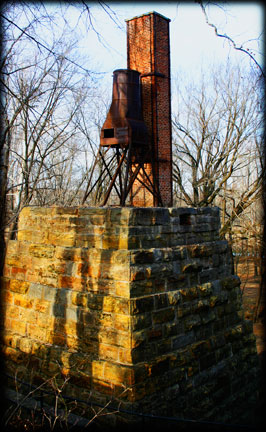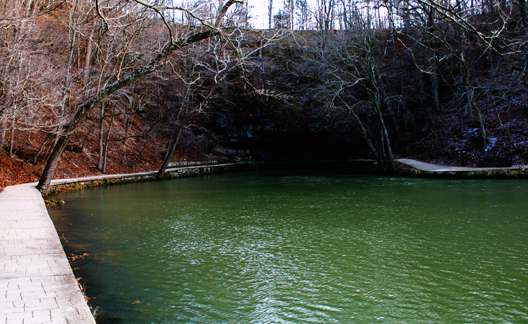Maramec Spring
Retold by Joshua Heston
It is rare to find a natural heritage site so touched by the industrial revolution as is Maramec Springs near St. James, Missouri.
The spring is massive — the fifth largest in the state — with an average daily flow of 100 million gallons. A cave system opens 17 feet beneath the surface of the main pool (Plate 1) and has been explored by divers for nearly a mile.
Maramec was known as “Big Lick Spring” by Native Americans.
Three natural features of the area would forever alter the history of Maramec: wood, water and iron.
Bountiful hardwood forests surrounded the site. Milllions of gallons of water poured from the earth and rich iron deposits were found nearby.
Thomas James, an industrialist from Chillicothe, Ohio, built the Maramec Iron Works (Plate 5) next to the spring. Operation began in 1829 — just eight years after Missouri statehood.
Management transferred to Thomas’ son, William James, in 1843. The Maramec Iron Works was, by then, a community with a population of 500.
Maramec would be the first iron works west of the Mississippi. The establishment helped industrialize the nation.
The iron works were necessary in the building of St. Louis gunships during the Civil War — gunships which bombarded Memphis in 1862 and Vicksburg in 1863.
By 1878, times had changed. The Maramec Iron Works closed due to bankruptcy, but the spring continued to flow unabated.
Ownership would eventually come to Lucy Wortham James, great granddaughter of founder Thomas.
Lucy would later write in her will, “As this is considered to be the most beautiful spot in Missouri, it is my great hope that you will arrange that it may ever be in private, considerate control, and ever open to the enjoyment of the people.”
Lucy Wortham James died in 1938.
Her will authorized the creation of The James Foundation, which maintains the park to this day.
Maramec Spring — and the surrounding property — became something of an upper-Ozarks tradition.
Generations of children have clambered over the ruined iron furnaces and played in the shadow of the quaint electric house (plate 4) — a 1920’s structure built to power a nearby ice plant and dairy farm operation.
The Department of Conservation maintains one of Missouri’s four trout parks at Maramec.
March 1—opening day of trout season—sees thousands of anglers lining the banks of the spring branch.
All because of an Ozark spring, flowing steadily into the Maramec River near St. James.
June 22, 2009
Plate 1.

Plate 2.

Plate 3.

Plate 4.

Plate 5.




